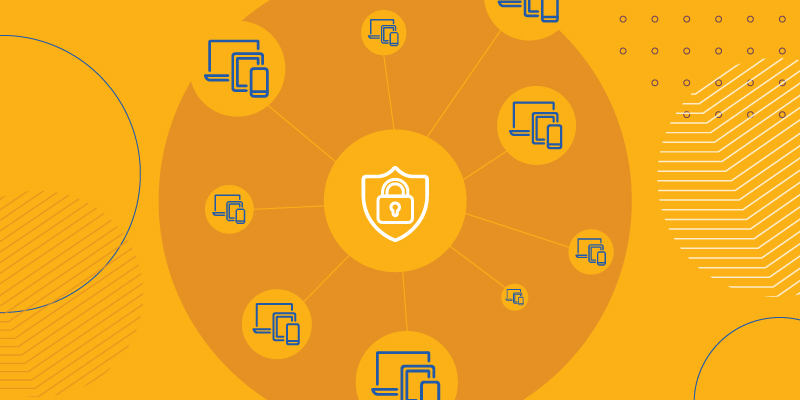
2021-02-20 01:46:32 Author: www.webroot.com(查看原文) 阅读量:206 收藏
Buzzwords and acronyms abound in the MSP industry, an unfortunate byproduct of marketing years in the making. Cybersecurity is a hot watercooler topic at any business. Well, now probably more likely a virtual happy hour than a watercooler, but nevertheless cybersecurity remains top-of-mind.
To sleep at night, MSPs feel they must enhance or expand their security offerings beyond the standard layers, like; firewalls, firewall filtering, active directory protocols, DNS Filtering and antivirus/malware detection. One of the ways many MSPs feel they can satiate their cybersecurity concerns involves buzzword-y new acronyms floating around involving “EDR” or endpoint detection and response. But what is EDR really and what can it do for MSPs and their clients?
But first, besides EDR, there’s also ADR, MDR, xDR and the industry can surely expect newer blank-DR acronyms coming in the next few years. What are all these acronyms and how do they help MSP protect their clients? Here are a few definitions:
- EDR (Endpoint Detection and Response) – Technically, every security agent sitting on an endpoint is an EDR solution. The information the agents feed back to administrators determines what action to take and when.
- ADR (Automatic Detection and Response) – Newer technology allows the agent to automatically make a decision without human intervention. Ideally, ADR automatically remediates a situation and reports to the administrators on action taken.
- xDR – This newer acronym refers to agents across a network communicating to make a remediation decision or report decision across multiple endpoints.
- MDR (Managed Detection and Response) – A best-of-breed solution using EDR, ADR and possibly xDR tools in various combinations, MDR allows a human team to make decisions and respond to situations. While more complex and administrative heavy, MDR closes the gap that arises when suspicious applications are being monitored and observed, but not reacted to by an ADR or xDR solution. Human-driven MDR ferrets out the suspicious and reacts.
Here are five things MSPs should consider when evaluating EDR solutions:
1. All security tools with an endpoint agent are basically EDR.
Their job is to detect malicious code, applications, scripts or other malicious files and make a status determination on the fly. Most security agents use various methods like physically scanning file hashes, scanning file content, watching behaviors, looking at scripts, detecting known attack surfaces and other techniques to try to ascertain if a newly encountered file is good or bad.
How the security agent reports its activity depends on the EDR tool. So, while many security tools claim they offer an “EDR” solution, the key is to determine the level of threat, suspicions and action taken in reporting or alerting that adds value for MSPs.
2. The “R,” or response, is key to a successful EDR solution.
While many security tools report and alert, the level of response is the most important aspect of any security practice. If the security agent provides minimal information for decision making, it’s of limited use to the technical personnel responsible for intervening.
On the other hand, technicians can take advantage of security tools with consoles that display alerts, reports and visibility into whether an agent responded, how and the agent’s current status. Too often tools don’t provide necessary insight for reviewing or comparing threat data or approaches – like the MITRE attack framework or other sites with relevant threat information.
Solutions with a more comprehensive API are advantageous for custom review, integration into more dedicated threat review tools or for alerting through a log gathering and reporting tool. APIs are valuable for providing added information from which human technicians can make decisions.
3. What can be done with the EDR information? Is it actionable?
Once a tool has been selected, what should be done with the information it provides? Answering this is key to successfully setting EDR expectations for customers. If a client requires an MSP has an EDR solution in place, installing an agent is only half of the equation.
Gathering the information into a comprehensive tool or suite can be daunting. If the security solution provider has tools like alerts, reports or an API, start there. However, these tools are often limited and need to be supplemented by a solution with higher performance or a faster response time.
Log gathering tools are a higher performance option that allow many tools to feed into a single system. Once such a solution is in place, the next challenge is to build rules for sifting through the millions of ingested points of information. These rules provide human reviewers more details for making decisions. It may take several cycles to hone in on the rules that lead to successfully spotting suspicious or malicious activity and protecting customers.
4. Understand what’s behind the EDR hype.
What’s the buzz around EDR and why has it become such a topic for discussion? Fair question considering level of effort to stand up, manage, monitor and address a situation when it arise can be costly and time consuming. Simply having a security vendor “supports EDR” isn’t enough. Selecting a check box to satisfy a requirement is, again, only half of the equation.
So, why go through the time and expense of implementing EDR? Here are three top reasons:
- Cybersecurity insurance – With the rise of breaches across business and public sector landscapes, cybersecurity insurance on the rise. Many providers have requirements from governance to tools that meet a specific scope. EDR is one such requirement.
- Good practice – Having layers of protection for customers is important. Extending security offerings by adding an EDR solution with a process will increase that security footprint.
- Managed Security Service Provider (MSSP) – More and more MSPs are adding value to their customers by adding cybersecurity-specific services. With cybersecurity challenges on the rise, many service providers can increase revenue and provide greater security posture for their customers. Implementing an EDR solution will contribute to that effort.
5. Plan out next steps for adopting EDR at your MSP
- Evaluate the need. Investing in potentially costly new solutions because of a buzzword is not advisable.
- Determine the level of effort required to adopt an EDR solution and devise a plan for doing it.
- Review existing tools and determine if existing solutions are being leveraged most effectively today.
- Build the team. Part of the plan for adopting EDR should include designating a security team to both manage the solution and respond to its findings.
Simply selecting ticking an EDR box won’t necessarily contribute to client security. MSPs should evaluate the needs EDR will satisfy, the level of effort it takes to implement and how EDR fits into their overall service offering. Vendors won’t hesitate to offer “EDR solutions,” but it’s up to the MSP to properly implement and establish process to support expectations. Simply having the solutions does no good. EDR done right requires the additional team focus, rules, review and responses. Implement an EDR offering with caution and planning.

About the Author
Shane Cooper
Manager, Solutions Consulting
Shane Cooper has 25 years’ experience specializing in security, virtualization, systems administration and server administration. Working with thousands of IT administrators, MSPs, Solution Providers and Systems Architects, Shane brings a depth of experience and industry knowledge to the security solution industry.
如有侵权请联系:admin#unsafe.sh